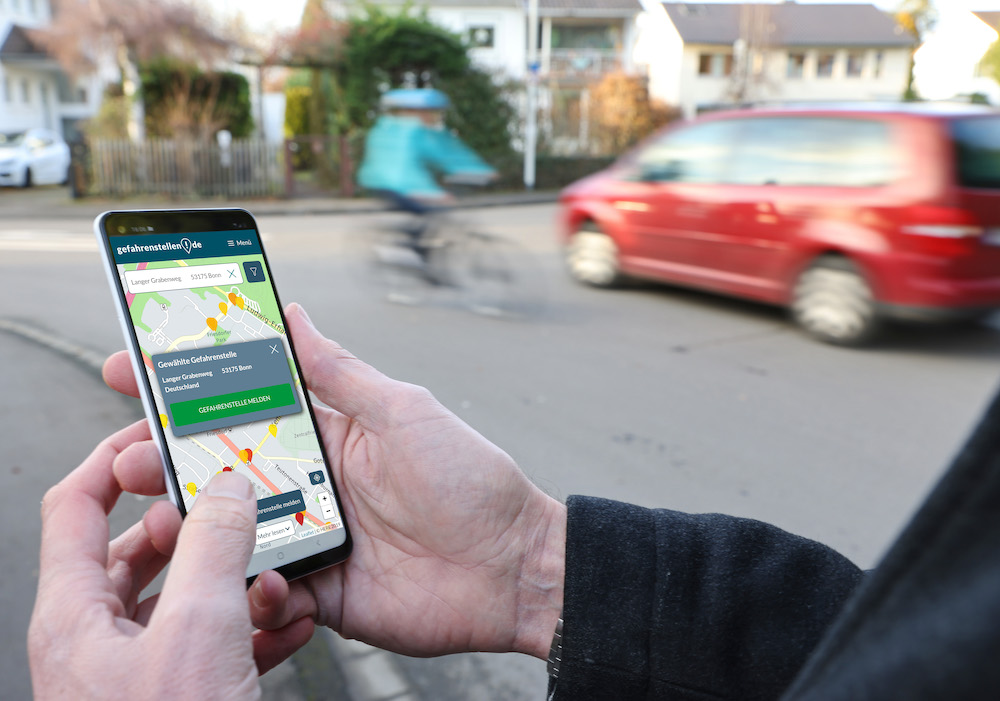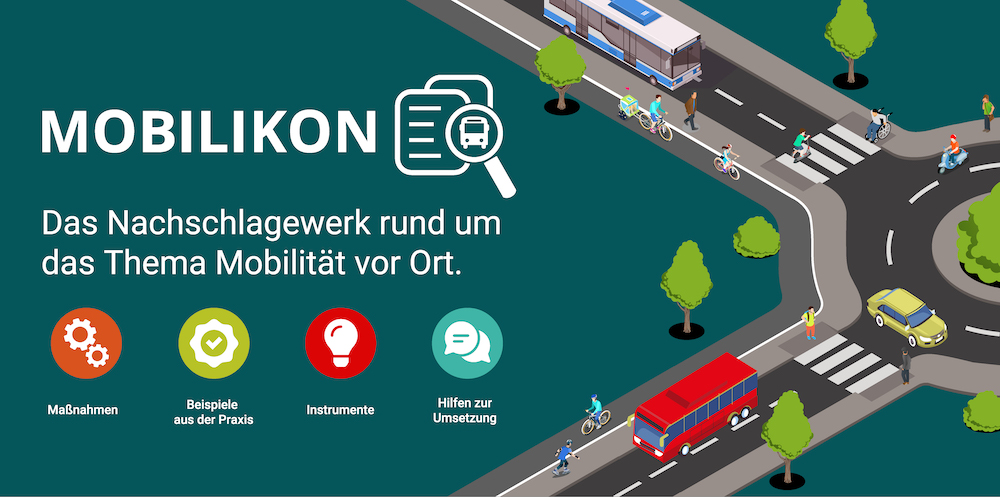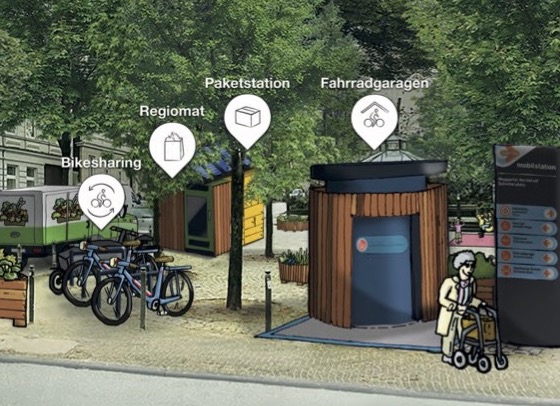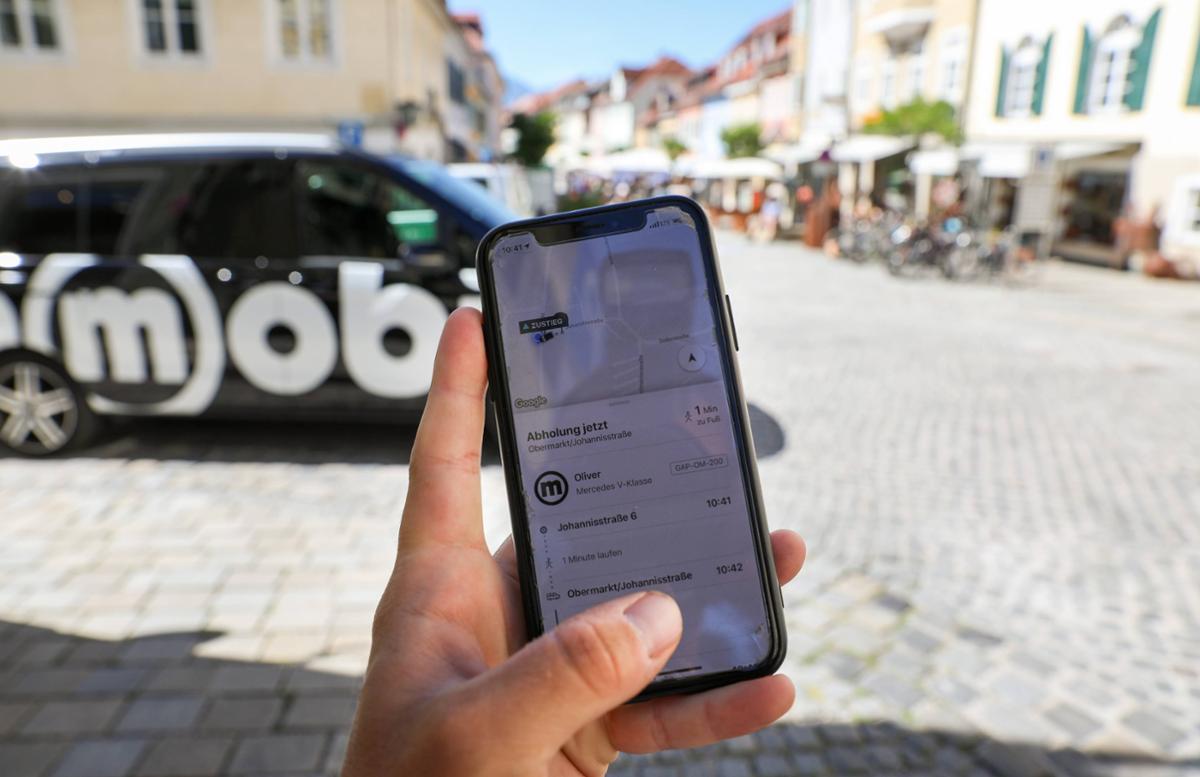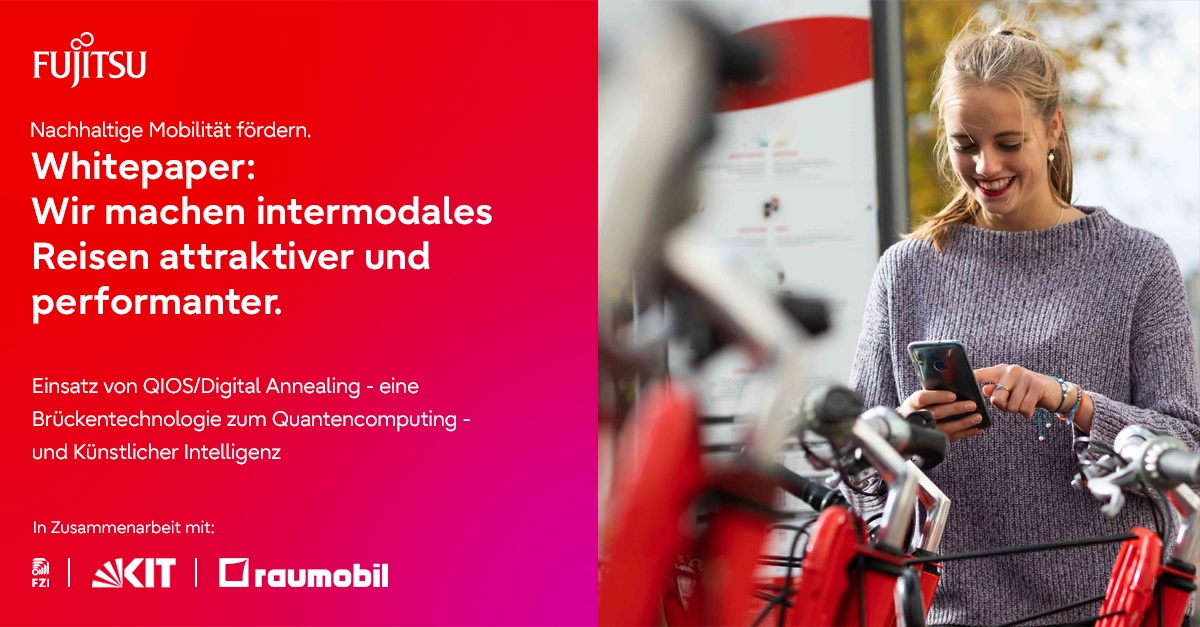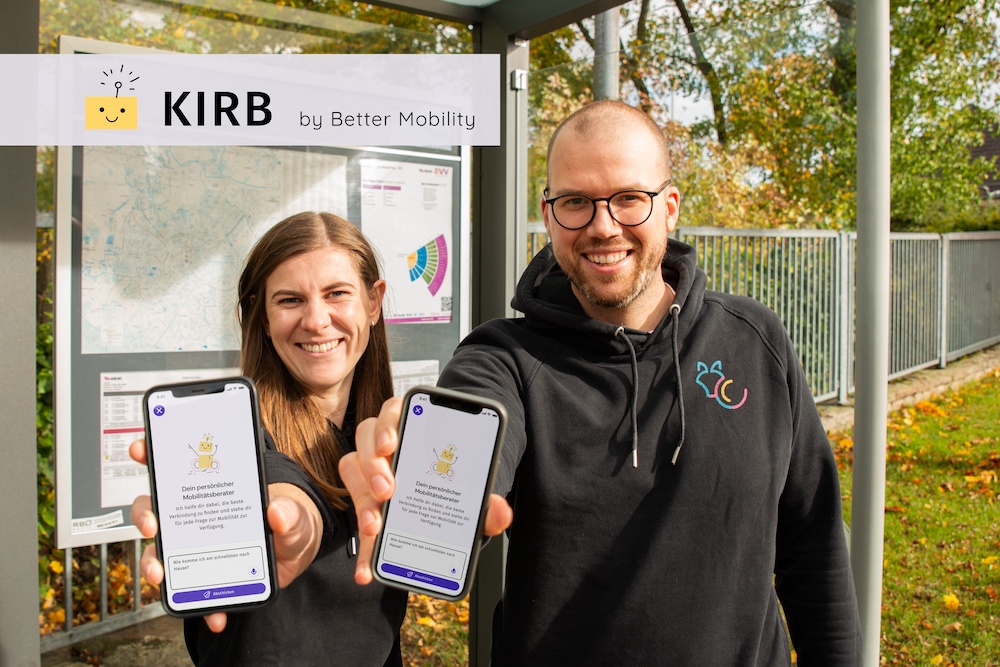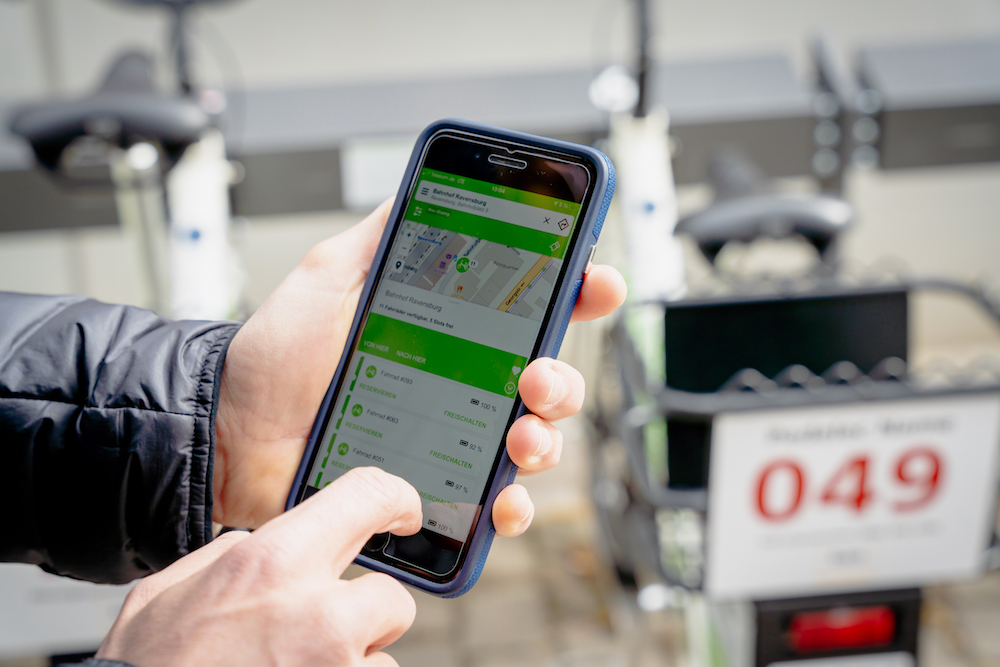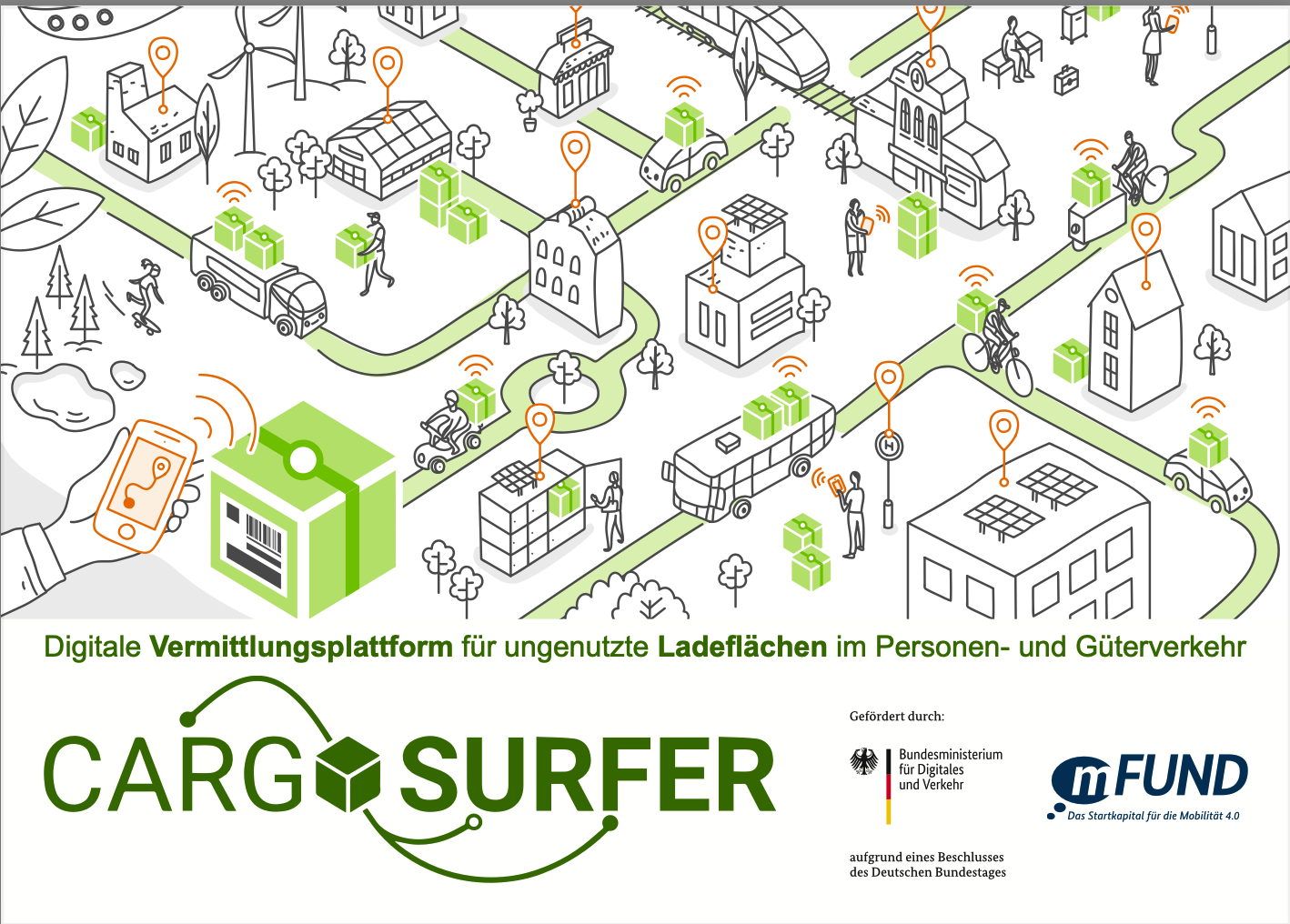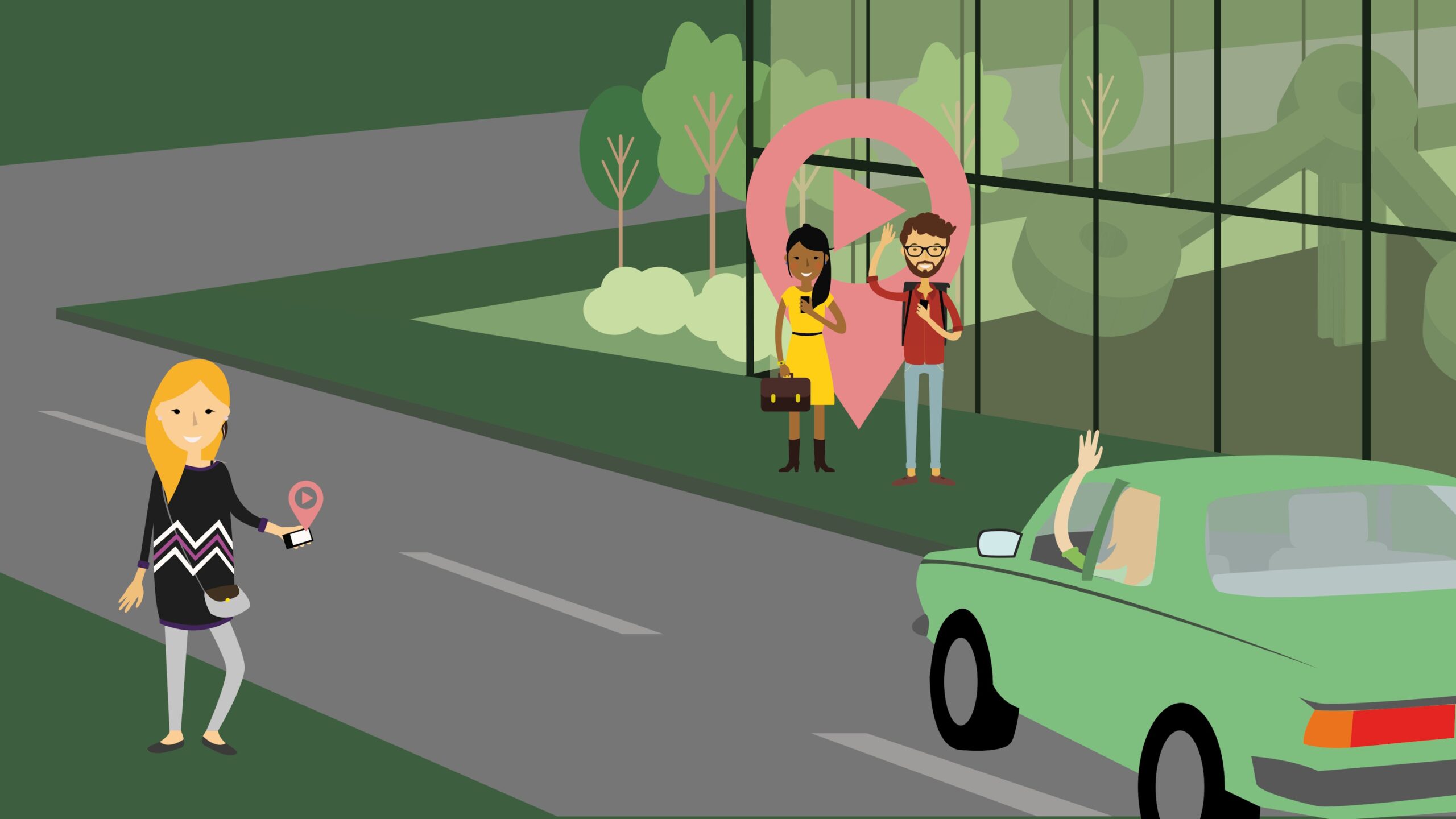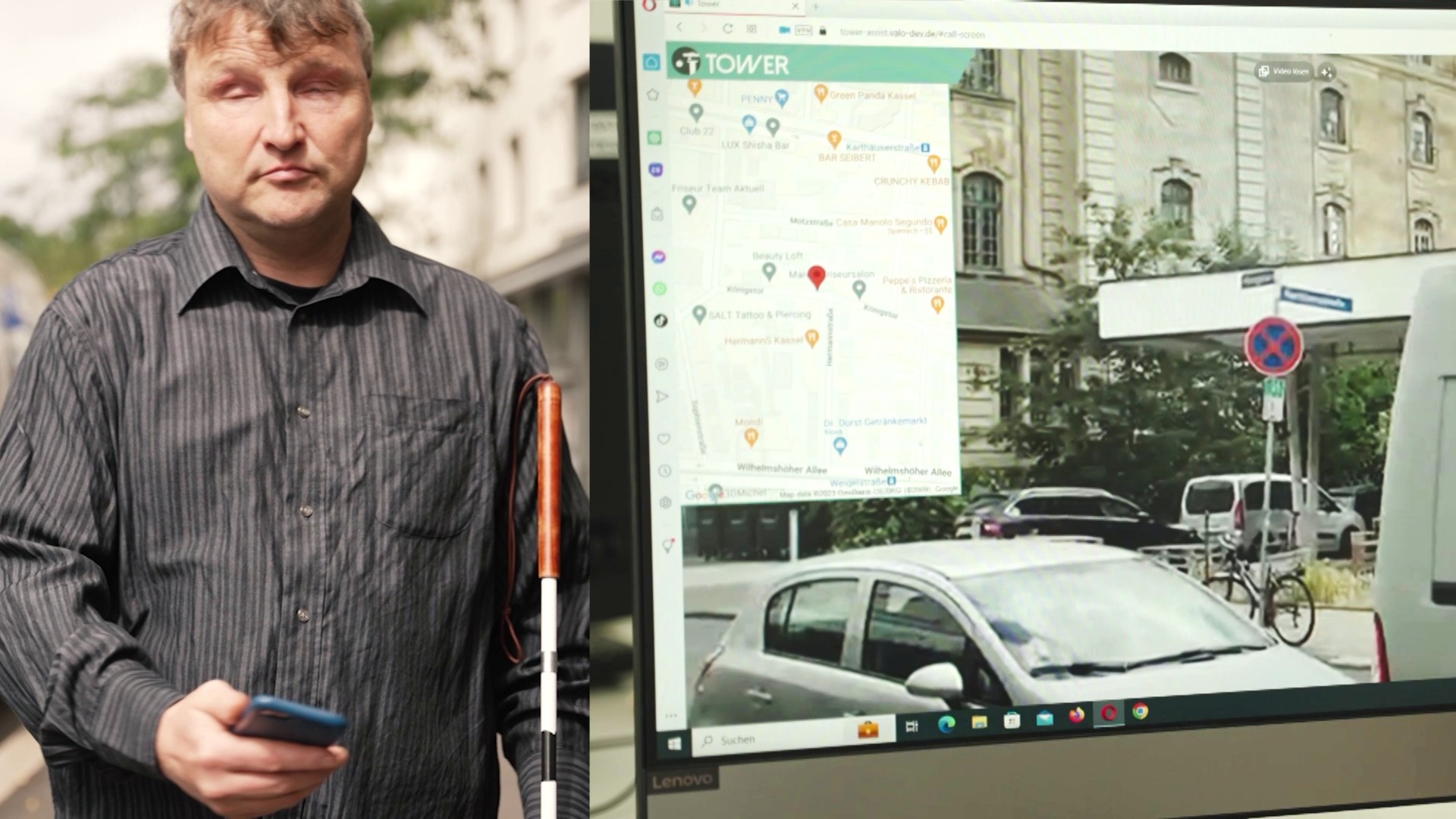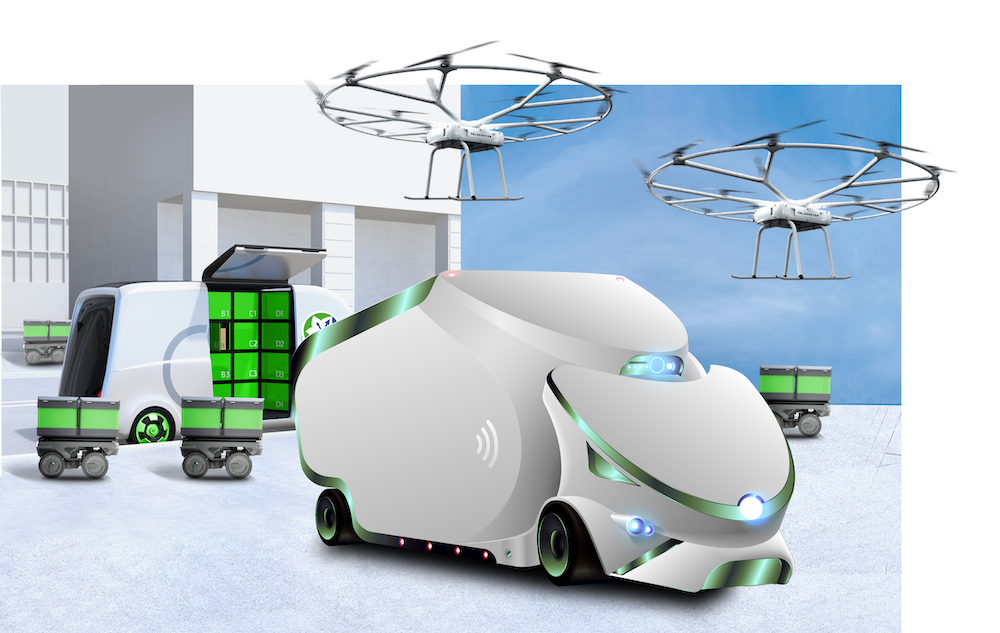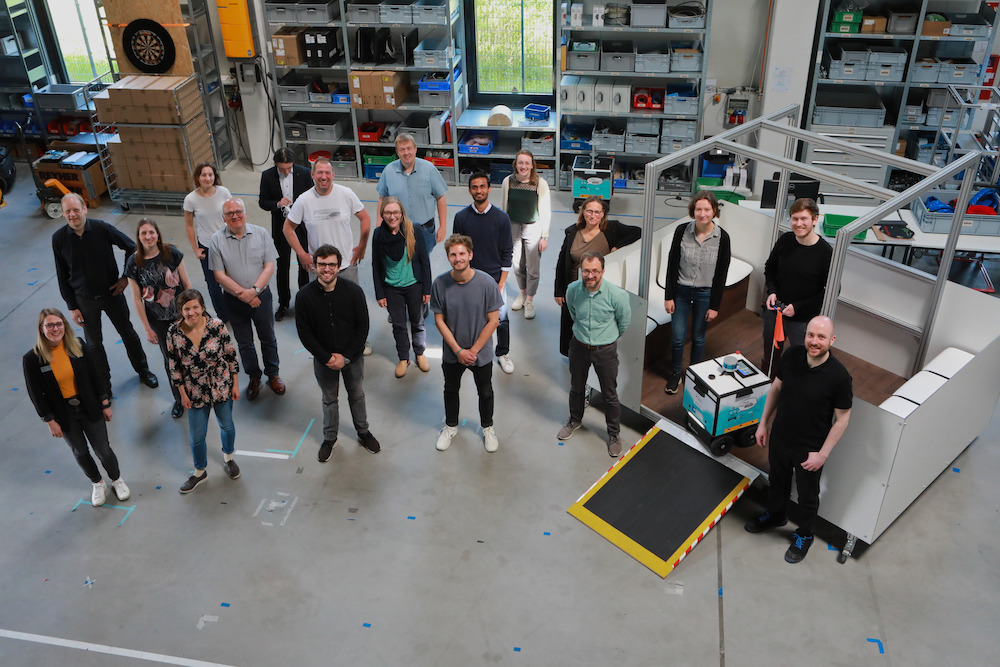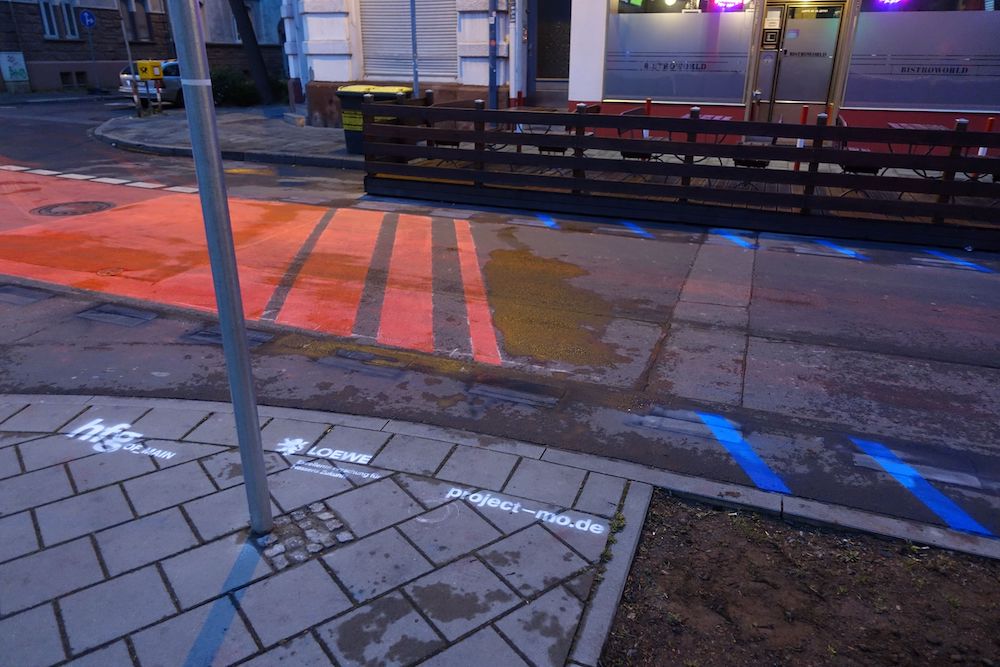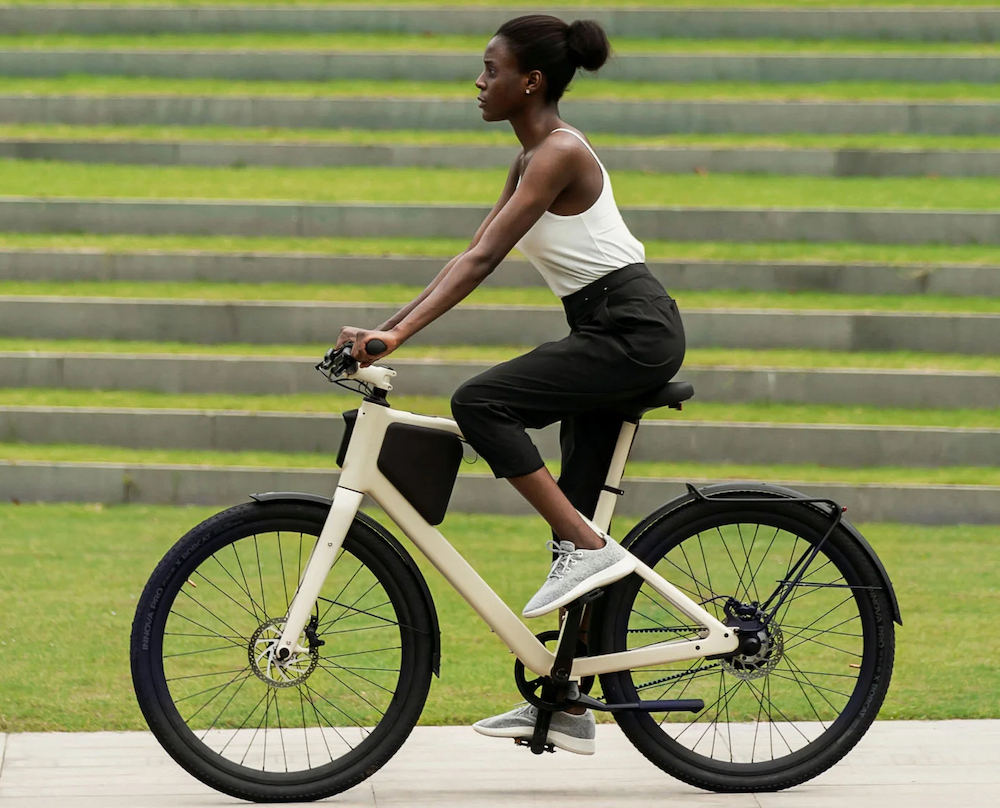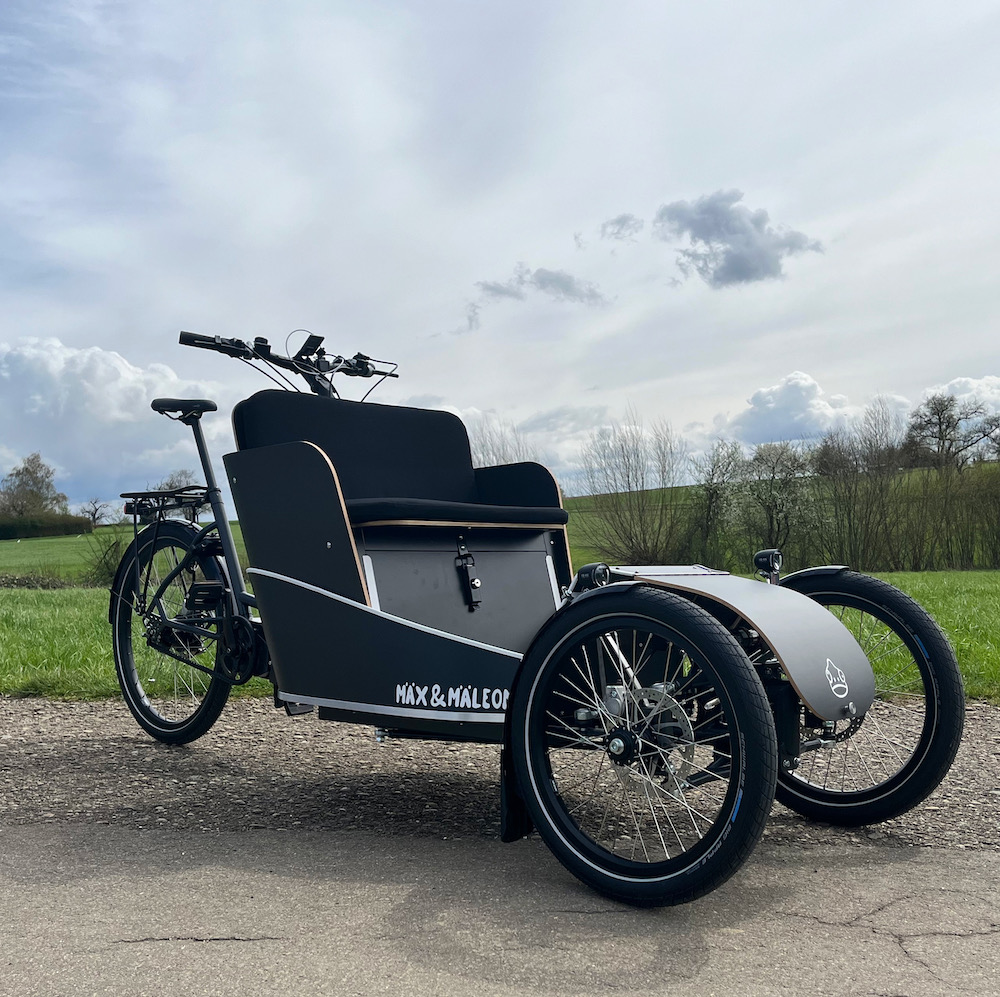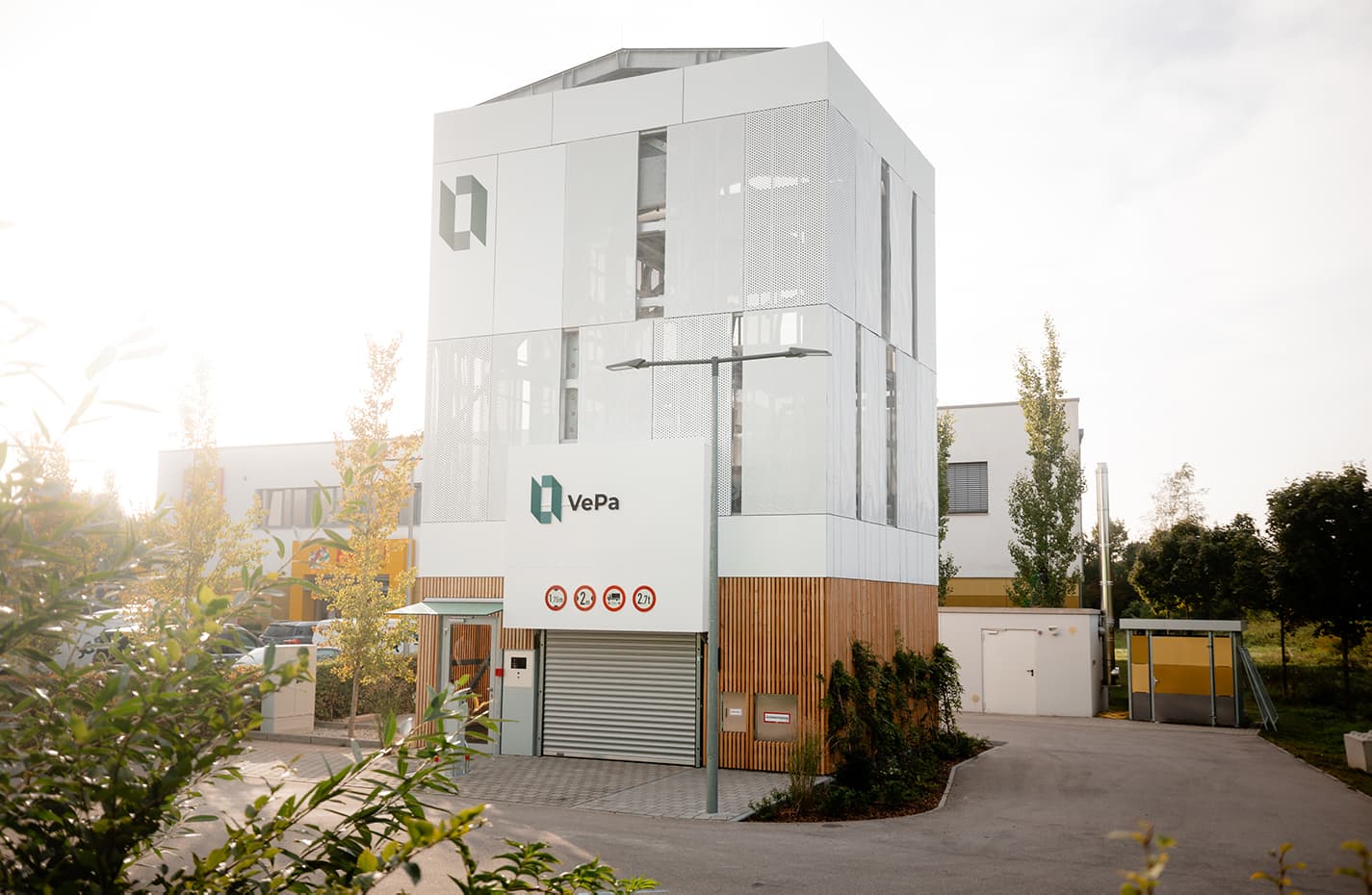Longlist 2023
DMP | Good Practice
Germany-wide FeGiS+ Traffic Safety Map
Germany-wide FeGiS+ Traffic Safety Map
The digital FeGiS+ traffic safety map makes risks in the road network visible by combining and locating accident data, hazards reported proactively by users, and additionally recorded vehicle braking maneuvers. The map displays a hazard score for each road segment and intersection. Timely warnings or prevention measures can help prevent accidents. The innovative data is used nationwide by municipalities and authorities through a separate tool for proactive traffic safety work, especially for the protection of vulnerable road users such as cyclists and pedestrians. Additionally, parents can use the routing function on gefahrenstellen.de to find safe school routes.
Location: Bonn (North Rhine-Westphalia)
Project Website Project WebsiteMobilikon – Your Comprehensive Resource on Local Mobility
Mobilikon – Your Comprehensive Resource on Local Mobility
Research has shown how mobility can be improved, but until now, there has been a lack of structured aggregation and audience-targeted dissemination of this knowledge, preventing it from reaching local municipalities. This gap is filled by “Mobilikon” with its neatly organized profiles – currently numbering almost 400 – in categories such as measures, tools, implementation aids, and practical examples, along with an extensive collection of publications. Representatives of municipalities can easily gain an overview, conduct targeted research, and swiftly implement mobility solutions. In doing so, Mobilikon makes a valuable contribution to ensuring environmentally friendly, convenient, inclusive, and future-proof mobility in rural areas.
Location: Bonn (North Rhine-Westphalia)
Project Website Project WebsiteMobility Station Bachplätzchen – Düsseldorf's Success Model for Urban and Connected Mobility
Mobility Station Bachplätzchen – Düsseldorf's Success Model for Urban and Connected Mobility
The Mobility Station Bachplätzchen is a prime example of transforming a car-dominated intersection into a multi-functional, safe, and livable space for the future. Bicycles, scooters, mopeds, cargo bikes, and electric cars are all available for easy, fast, and cost-effective rental at the Mobility Station. The double-decker bicycle storage facility promotes mobility with personal bikes, and the cargo bike vending machine is particularly beneficial for families. Sustainable materials, local production and supply chains, and energy self-sufficiency through photovoltaics complete the concept. Benches, greenery, and de-paved areas, along with the outdoor seating of the kiosk, enhance the local quality of life.
Location: Düsseldorf (North Rhine-Westphalia)
Project Website Project WebsiteMobility Stations in the Neighborhood
Mobility Stations in the Neighborhood
In close collaboration with residents, mobility stations were established in the Ölberg neighborhood of Wuppertal, which was grappling with high parking pressure. These stations provide car-sharing options, public transportation connections, and bicycle parking facilities, all conveniently located in one central place. They promote the shift to sustainable mobility and alleviate parking pressures. Additionally, the project introduced the concept of a neighborhood hub: complementary features such as parcel lockers and advisory services can address additional needs within the neighborhood. Various financing models ensure that residents can use these services in a socially equitable manner. The experiences and blueprints of the financing and operational models aim to empower other neighborhoods for sustainable mobility.
Location: Wuppertal (North Rhine-Westphalia)
Project Website Project Website
NUDAFA Bicycle Traffic Atlas
NUDAFA Bicycle Traffic Atlas
Many municipalities that aim to expand their road networks and bicycle infrastructure face challenges such as lack of data, lengthy planning processes, and limited resources. The Bicycle Traffic Atlas makes it easier for them to get started. It automates the processing of OpenStreetMap data and presents it visually in thematic maps. These maps provide information about the urban area (including source and destination points), infrastructure, surface quality, and types of roads as the basis for bicycle network planning. The needs of residents regarding safety and route selection are also integrated. This allows for the development of a target network that can be viewed and updated at any time. The project demonstrates how open data and digitalization can significantly accelerate bicycle network planning with the help of the local population.
Location: Berlin (Berlin)
Project Website Project Website
omobi – Flexible Murnau Local Bus Service
omobi – Flexible Murnau Local Bus Service
The Murnau local bus service, known as omobi, was launched in the summer of 2020, making it one of the oldest on-demand transportation services in rural Germany. This local bus service provided an alternative to owning a private car, allowing people without cars to become mobile. The service was so well-received that some users even gave up their cars. Today, the local bus complements public transportation in three municipalities. The starting point and destination within the service area are freely selectable, with no fixed timetable or routes. Instead, a smart algorithm combines requests and creates routes based on real-time demand. Passengers with similar destinations share the ride, collectively reducing emissions. Those without smartphones can also book the local bus by phone and pay for the ride in cash.
Location: Murnau (Bavaria)
Project Website Project WebsiteRegional Carpooling as an Integration in Public Transportation – A Case Study from Bonn
Regional Carpooling as an Integration in Public Transportation – A Case Study from Bonn
An unusual pairing: The goFLUX carpooling app connects traditional public transportation with motorized individual traffic (MIV) by making available empty seats in carpooling arrangements for public transportation. The unused resources of MIV are enormous: 70 percent of people commute to work by their own car, with nearly all of them traveling alone. Carpooling, on the other hand, is efficient, sustainable, and helps better connect suburban and rural areas. The carpooling app calculates the best route based on Google Maps, automatically matches drivers and passengers, and provides real-time public transportation data to facilitate transfers to buses and trains for the first or last mile. Anyone with a public transportation subscription can use carpooling services for free.
Location: Cologne (North Rhine-Westphalia)
Project Website Project WebsiteShuttle Model Region Upper Franconia
Shuttle Model Region Upper Franconia
Since 2021, six highly automated minibuses have been operating on public roads in three Upper Franconian cities. Their operation aims to bring automation closer to all aspects of the travel chain: from passenger assistance to automated driving without onboard staff, in all weather conditions, remotely monitored from the control center. The project has set high goals, including testing the use of Artificial Intelligence (AI) techniques, experimenting with remote control and on-demand operation of the buses, considering the specific needs of mobility-impaired individuals, translating findings into business models, and engaging in local dialogues to promote acceptance of automated and eventually autonomous driving.
Location: Kronach (Bavaria)
Project Website Project Website
sprinti – The Unique On-Demand Service for Suburban Areas
sprinti – The Unique On-Demand Service for Suburban Areas
The on-demand service sprinti covers areas in the Hannover region that are not served by regular bus routes, operating from early morning until late evening. sprinti enables flexible and demand-responsive mobility in rural areas. Booking is done through the sprinti app. Its algorithm checks if there are comparable regular bus connections – if not, it calculates the optimal route to transport multiple passengers to their respective destinations in the shortest time possible. Passengers then wait for a maximum of 20 minutes and walk a maximum of 150 meters to the virtual bus stop. A standard public transportation ticket is sufficient for the ride, with no additional charge. The vehicles are wheelchair accessible, and after registration, passengers can bring items such as walkers, bicycles, strollers, and child seats are also available.
Hannover (Lower Saxony)
Project Website Project Website
DMP | Digital Transformation & Data Driven Mobility
Registering Connections by Passengers via App
Registering Connections by Passengers via App
When a train is delayed, passengers often miss their connecting trains, even if it’s only a matter of a few minutes. Why? Many parties need to communicate and, from the perspective of the entire system, decide whether the connecting train can wait. The first problem: Train personnel are not always available everywhere and at all times to register a request for a connection. In Bavaria, passengers can now report their connection request themselves via an app. In the background, software manages the complex process and information chain from passengers to the transportation company and back. A future development will also integrate regional buses because reliable connections to them are especially crucial in rural areas. This makes it more appealing to leave the car behind.
Location: Munich (Bavaria)
Project Website Project Website
DB Rad+
DB Rad+
Thanks to “DB Rad+,” cycling now has double and triple benefits. With the app, you can track bike routes and use the kilometers you’ve ridden as currency at local businesses and with Deutsche Bahn (DB). The app also accumulates all the kilometers ridden in a communal account. When reaching specific milestones, there are rewards that benefit everyone. For example, DB opened a bike repair station in Hamburg or hosted a bike washing day in Wiesbaden. So, cycling is not just for personal benefit – every kilometer also counts for the community. Users can also donate their cycling data to the municipality. Municipalities can use a specially developed analysis tool to identify cycling hotspots and gain additional insights for traffic planning.
Location: Frankfurt am Main (Hessen)
Project Website Project WebsiteEmotion Perception for (E-)Bicycle Safety and Mobility Comfort – ESSEM
Emotion Perception for (E-)Bicycle Safety and Mobility Comfort – ESSEM
ESSEM transforms emotions into data: Subjective perception – “Is this place dangerous?” – becomes objectively verifiable and aids in traffic planning. Here’s how it works: Participants record their skin conductivity, skin temperature, and geoposition while cycling using sensor wristbands and an app. They also answer standardized questions. The data reveal which locations are negatively perceived or avoided and why – municipalities can take corresponding actions. In the future, products and services for cyclists can also be evaluated based on their ability to reduce stress. The project aims to promote more cycling, fair distribution, and higher quality of public spaces.
Location: Stuttgart (Baden-Württemberg)
Project Website Project WebsiteIntermodal Mobility meets Quantum & AI
Intermodal Mobility meets Quantum & AI
Traditional routing algorithms do not take into account future route congestion and plan each route “selfishly,” without considering parallel requests – otherwise, it would take several minutes. However, Fujitsu’s optimization service enables collaborative routing in seconds, with comprehensive information and choices that allow for a more even utilization of public transportation and sharing services. Thanks to QIOS/Digital Annealing – a bridge technology to quantum computing – and artificial intelligence techniques, real-time occupancy data from the entire transportation system, as well as historical data and queried transportation connections, can be analyzed, supplemented by data from studies, surveys, and simulations – all at breathtaking speed.
Location: Berlin (Berlin)
Project Website Project Website
KIMONO-EF
KIMONO-EF
The KIMONO-EF project aims to enhance the safety and comfort of mobility-impaired individuals. It focuses on intersections with traffic lights and public transportation crossings, which are equipped with various sensors such as infrared, radar, and Lidar. When the system detects individuals with disabilities at these locations, it may extend the green light duration or prompt public transportation vehicles to wait. This is done automatically, without discrimination, and regardless of the time of day or weather conditions, thanks to artificial intelligence techniques. This project enables social inclusion for individuals who would otherwise rely too often on assistance and motorized individual transportation.
Location: Erfurt (Thuringia)
Project Website Project WebsiteKIRB: AI-Powered In-App Travel Planning Agent with a Focus on Accessibility
KIRB: AI-Powered In-App Travel Planning Agent with a Focus on Accessibility
Many mobility applications are highly complex. KIRB addresses this issue: The AI-powered mobility agent enables information requests and bookings in natural language and provides personalized assistance. In multiple ways, this project contributes to the sustainable development of mobility: environmentally, by facilitating the use of eco-friendly transportation options; socially, by making mobility accessible to everyone, especially seniors and individuals with disabilities or language barriers; and economically, by reducing the complexity of mobility services and promoting shared mobility. This can ultimately lead to more efficient use of transportation infrastructure and cost savings for the community in the long term.
Location: Aachen (North Rhine-Westphalia)
Project Website Project WebsiteMobileCityGame
MobileCityGame
Fundamental decisions in mobility planning are often made in municipalities based on gut feelings. The MobileCity app aims to change that. It makes the core functions of complex traffic models accessible – intuitively, like a game. Using the example of Karlsruhe, the app allows users to dynamically experience the effects and dependencies of various interventions in urban traffic on climate, quality of life, and finances up to 2050. These factual future scenarios are intended to make debates more vivid and informed, facilitate public participation, and support education at universities and colleges. The app is based on scientific simulation and analysis models, expert knowledge, and data from the city of Karlsruhe and is the only one in the world that runs a complete local traffic model on digital devices.
Location: Karlsruhe (Baden-Württemberg)
Project Website Project WebsiteSAFIRA
SAFIRA
The Berlin-Brandenburg Transport Association is expanding its information services with a new layer of information: occupancy data. These data are calculated based on real-time data from passenger counting devices and query data from the passenger information system. Additionally, in the SAFIRA project, user requirements, their subjective perception of occupancy, and their motivation for behavior changes are being researched. This project helps in several ways: Passengers can better plan their journeys and avoid overcrowded buses and trains. The more even occupancy of vehicles helps to use the existing vehicle and infrastructure capacity more efficiently, and at the same time, the information can be used for traffic planning and scheduling.
Location: Berlin (Berlin)
Project Website Project Website
Connected Mobility is Transforming Schussental
Connected Mobility is Transforming Schussental
Every day, 30,000 people commute to Ravensburg and Weingarten. How they do it makes a significant difference, given the importance of climate protection and the threat of traffic congestion. The tws.mobil platform is bringing new mobility concepts to the streets and minds of the region. It not only integrates all the mobility options available in the area but also connects modes of transportation, different user groups, partners, and services. The platform is open to everyone and can be expanded as needed. Currently, it includes suggestions for E-car sharing, E-bike sharing, public transportation, as well as the vehicle fleets of several municipal administrations and companies. The platform also facilitates corporate mobility management, making companies and government agencies leaders, implementers, and role models in the mobility transition.
Location: Ravensburg (Baden-Württemberg)
Project Website Project WebsiteDMP | New Mobility
Autonomous Bicycles (AuRa)
Autonomous Bicycles (AuRa)
The AuRa project (Autonomous Bike) explores and develops the next generation of bike-sharing. The goal is autonomous cargo bikes that can be summoned to any location at any time via a mobile app. Once handed over to users, they are ridden like a “regular” bike. After use, the cargo bike autonomously returns to a maintenance station, moves to an area with anticipated high demand, or directly heads to the next user. AuRa uniquely combines the advantages of bicycles with the potentials of vehicle automation. As a complement to public transport on the first and last mile, it enables a seamless travel chain, which is also economically viable. This approach promotes genuine and sustainable door-to-door mobility.
Location: Magdeburg (Saxony-Anhalt)
Project Website Project Website
CargoSurfer – Digital Matching Platform for Unused Cargo Space in Passenger and Freight Transport
CargoSurfer – Digital Matching Platform for Unused Cargo Space in Passenger and Freight Transport
How can logistics be strengthened sustainably without adding extra vehicles? The solution lies in the more efficient use of cargo space in public transport and freight transport vehicles, which are on the road every day but are rarely fully utilized. The “CargoSurfer” makes available cargo space on already planned trips visible and bookable in real-time. This significantly reduces the effort for shippers. Businesses with available cargo space and transportation companies can generate additional revenue to reduce their transportation costs. The system also reduces traffic congestion through shipment bundling and efficient vehicle utilization, lowers CO2 emissions even with existing propulsion technologies, and optimizes driver deployment.
Location: Frankfurt (Oder) (Brandenburg)
Project Website Project WebsiteCommunity Talks: Mobility as Collective Effort
Community Talks: Mobility as Collective Effort
The transformation of mobility in rural areas is the focus of the company Match Rider. They rely on their specially developed software solutions for volunteer-organized transportation, such as community buses, enhanced with AI-powered passenger forecasts, and their own app for carpooling, MatchRiderGO Community. These products are developed and introduced as part of the “Community Talks” public discussion series. By combining direct citizen participation with innovative technological solutions, mobility in rural areas becomes more sustainable. Communities are connected, and the quality of life in these regions is significantly improved. Mobility serves as a tool to strengthen essential services and social infrastructure.
Location: Heidelberg (Baden-Württemberg)
Project Website Project WebsiteFernassistenz Project
Fernassistenz Project
The goal of the Fernassistenz Project is to provide a nonprofit service that connects blind, visually impaired, elderly, and cognitively impaired individuals with well-trained, trustworthy assistants through an app. These assistants are meant to help with orientation, reading, comprehension difficulties, and overcoming mobility barriers. These barriers do not refer to physical obstacles like steps or narrow passages but rather poorly designed apps and websites, visualized data, touchscreens, and hard-to-read schedules. With a Fernassistenz app, individuals can easily and anytime borrow the eyes and expertise of professional remote assistants in such situations. Overcoming barriers, achieving goals. For greater independence, self-efficacy, and self-determination for all.
Location: Kassel (Hessen)
Project Website Project Website
HEAL – Highly Automated – Socially Oriented – Demand-Driven – Rural
HEAL – Highly Automated – Socially Oriented – Demand-Driven – Rural
The town of Bad Birnbach, with its 5,800 residents spread across 70 square kilometers and 85 districts, sees a conventional bus service passing through only every few hours. However, by introducing two fully automated electric minibusses, they have managed to provide a service that effectively connects essential destinations such as cultural, sports, and healthcare facilities according to demand for both residents and visitors of the spa town. The shuttles can be summoned to one of 20 virtual stops via a mobile app or by phone. The project’s goal is to create mobility for all, with a strong focus on vehicle accessibility and reducing the first and last-mile challenge, and accompanying research primarily addresses public health issues.
Location: Bad Birnbach (Bavaria)
Project Website Project WebsiteLastMileCityLab Bruchsal
LastMileCityLab Bruchsal
The LastMileCityLab in Bruchsal originated from the desire to alleviate inner cities from the increasing delivery traffic. Six years and numerous milestones later, the logistics system efeuLog is being tested. It includes a neighborhood depot, autonomously driving delivery robots, and an app for the fine distribution of packages to recipients. The LastMileCityLab, a real-world laboratory for logistics and transportation on the last and penultimate mile, will go even further: In addition to mobile package stations and new robot vehicles, heavy-duty drones will be used to transport packages from transfer points on the highway to the neighborhood depot. In parallel, an academy is being established to share expertise and support municipalities and industry in finding solutions for urban logistics.
Location: Bruchsal (Baden-Württemberg)
Project Website Project WebsiteSwobbee
Swobbee
Swobbee is the world’s first and currently the only manufacturer-independent battery swapping station for all types of electric micro-vehicles, such as e-bikes, e-scooters, or e-mopeds. Presently, it is compatible with eight different battery types, with more expected to be added in the future. The decentralized Swobbee stations allow electric micro-vehicles to be charged where they are needed, and the option to share Swobbee stations with others means that businesses do not need to establish their own charging infrastructure. This enhances the attractiveness of alternative car options in urban areas. Additionally, Swobbee supports standardization efforts in the electric micro-vehicle battery sector with its infrastructure and expertise.
Location: Berlin (Berlin)
Project Website Project WebsiteTaBuLa-LOGplus
TaBuLa-LOGplus
The transportation of goods within public transportation is not a new concept – what’s new is the combination with automated transport robots. They travel within public transportation and then deliver the goods to the doorstep, monitored and coordinated by a shared control center, optimized through Artificial Intelligence techniques. This efficiently utilizes underutilized public transportation vehicles and avoids parallel logistics traffic. This conserves resources and reduces CO2 emissions. Additionally, it provides much-needed funding for underfunded public transportation. The pilot operation is scheduled to commence in mid-2024 within mixed traffic.
Location: Herzogtum Lauenburg (Schleswig-Holstein)
Project Website Project Website
uRyde
uRyde
The workplace is a central mobility point for many people, promising significant mobility synergies. With uRyde, one of the leading mobility platforms, these synergies can be harnessed. uRyde combines inter-employer ridesharing, public transport connections, company and shuttle buses, charging and parking management, as well as a mobility budget in a single mobility app. uRyde launched in May 2022 in the Nuremberg metropolitan region. Currently, more than 40 companies, including Siemens, adidas, Schaeffler, and PUMA, as well as universities and cities, are part of this new sustainable corporate mobility initiative. Over 180,000 people in the metropolitan region have access to the app and are reducing CO2 emissions. The goal is to expand this concept to additional regions.
Location: Nürnberg (Bavaria)
Project Website Project WebsiteDMP | Design
Bicycle Streets: Supporting Cycling Through Design
Bicycle Streets: Supporting Cycling Through Design
There are no uniform standards for the design of bicycle streets. However, this is not the case in Offenbach. New starting and ending markings, pictograms, and safety separation strips can now be found on all bicycle streets there. To achieve this, an initial test route was established, for which designers from the HfG Offenbach developed several designs. These designs were then evaluated by citizens through an extensive written survey. The result aims to make bicycle streets visible, recognizable, and intuitive. It enhances traffic safety and demonstrates that mobility design bridges the gap between the transportation system and users. The bicycle streets can positively influence the perception of sustainable mobility – and thus, also impact usage behavior.
Location: Offenbach am Main (Hessen)
Project Website Project WebsiteLEMMO One – E+Bike
LEMMO One – E+Bike
LEMMO One is not an ordinary e-bike as evidenced by its removable Smartpac: The essential electrical components – battery, motor control, connectivity – are bundled there instead of integrated into the frame. It can be repaired or replaced, leaving the bicycle unaffected. This increases its lifespan and allows it to stay technologically up-to-date. By the way, the Smartpac also functions as a power bank on the go. But the LEMMO One can do even more: The lightweight frame is made of recycled aluminum, and thanks to innovative adhesive technology, the energy- and CO2-intensive welding process is eliminated. Furthermore, all parts are standardized – they can be replaced or repaired at any bicycle shop. This is not only sustainable but also very user-friendly.
Location: Berlin (Berlin)
Project Website Project WebsiteMETRUCKS – built to last
METRUCKS – built to last
Most deliveries on the last mile are still carried out using vehicles with internal combustion engines. While cargo bikes are gaining popularity, they offer little comfort and quickly wear out under the high demands of the parcel and courier business. The solution: METRUCKS – Mini-trucks with pedals. Since they are officially classified as Pedelecs (electrically assisted bicycles), no insurance or driver’s license is required, and they can also use bike lanes. Delivery routes become shorter, and the drivers finish much faster. This robust vehicle for 200 kilograms of cargo is made of steel and completely modular, making it easy to repair and upgrade. This makes METRUCKS particularly resource-efficient and economically attractive.
Location: Schwäbisch Hall (Baden-Württemberg)
Project Website Project WebsiteNew Replacement Transport – Getting to Your Destination Easily and Comfortably
New Replacement Transport – Getting to Your Destination Easily and Comfortably
Replacement rail services don’t have a good reputation. However, they are becoming increasingly important as the German Railway (Deutsche Bahn) is modernizing its rail network to an unprecedented extent. During the sometimes months-long general renovations, passengers have to switch to buses. To avoid losing too many customers and jeopardizing the shift towards sustainable transportation, DB has designed a new, needs-oriented replacement service – and has already implemented it between Nuremberg and Würzburg. The New Replacement Transport relies on intuitive signage, real-time information, and a live map. Modern buses offer high comfort with features such as Wi-Fi, USB charging options, onboard restrooms for longer journeys, and even the ability to carry bicycles for commuters.
Location: Frankfurt am Main (Hessen)
Project Website Project Website
Passenger Bike from Mäx & Mäleon
Passenger Bike from Mäx & Mäleon
The Passenger Bike is a sporty e-cargo bike with a bench seat for children or adults and space for additional luggage – with a total weight of 250 kilograms! Entertainment during the ride now becomes as normal on the bike path as it is on the highway. The trunk under the bench seat converts into a loading area for up to 100 kilograms of cargo with just two handles. The turbo motor and the race-inspired chassis with leaning technology, combined with two front wheels, provide fun and double braking power. With these and other features, the Passenger Bike combines the advantages of a car with those of a bicycle, making it a sustainable mobility alternative for virtually any use case.
Location: Frankfurt am Main (Hessen)
Project Website Project WebsitePillart – Custom Charging Stations for Electric Vehicles
Pillart – Custom Charging Stations for Electric Vehicles
What if a charging station – an everyday object – not only served a functional purpose but also catered to the aesthetic needs of its users? Pillart, a startup from the Eifel region, humanizes technology with its artistic charging stations, making charging more beautiful and enhancing public spaces. The company offers a wide range of designs created by artists from both domestic and international backgrounds. They actively participate in shaping the appearance of the charging stations and receive royalties for their contributions. The production process primarily takes place in Germany, and sustainable materials are used. Therefore, anyone installing a Pillart charging station in their parking lot is simultaneously supporting culture and preserving the environment!
Location: Ammeldingen (Rhineland-Palatinate/Rheinland-Pfalz)
Project Website Project WebsiteSIMO – Mobility Simulator for Wheelchair Users
SIMO – Mobility Simulator for Wheelchair Users
Ordering a wheelchair today, even if it’s a custom-made one, typically doesn’t allow users to try it out or test it in advance. That’s where SIMO comes in: Thanks to this innovative simulator, users can experience their future wheelchair in advance and try it out in a virtual environment. Initially, the individual is measured precisely on the simulator, and then the device is adjusted accordingly to match the final product. The test drive serves not only for familiarization but also for video analysis of movement, seating position, and anatomy. Adjustments are made to make it fit perfectly. The product improves quality of life and prevents health problems that can arise from poor posture.
Location: Colmberg (Bavaria/Bayern)
Project Website Project WebsiteVBB Easy
VBB Easy
Special Olympics, special App: For the Special Olympics World Games 2023 in Berlin, the Berlin-Brandenburg Transport Association (VBB) has released the “VBB easy” routing app. It is designed for people with learning disabilities or mobility limitations – and for anyone who desires an exceptionally user-friendly app for planning routes with buses and trains. The app is presented in simple language and is easy to understand intuitively. The schedule information shows barrier-free routes. This offering is complemented by the “VBB GuideMeGo” app, which provides live video assistance on the go. Both apps simplify access to self-determined mobility and promote an inclusive society.
Location: Berlin (Berlin)
Project Website Project Website
VePa Vertical Parking
VePa Vertical Parking
New construction often requires parking spaces for cars, which can complicate projects and harm the environment and climate. The VePa Parking Tower is the solution: It provides space for up to 12 cars on an area of only 45 square meters, with platforms that rotate around like a paternoster elevator. During construction, much less concrete is needed, reducing the CO2 footprint per parking space by up to 98 percent. The energy for the efficient electric motor can be generated with a photovoltaic system. The modular construction allows for quick assembly, disassembly, or relocation. Additionally, the tower can be expanded into a mobility hub, with parking spaces for bicycles, shared and micro-mobility options, and electric charging infrastructure. This frees up even more urban space for car-free zones or new green areas.
Location: München (Bavaria/Bayern)
Project Website Project WebsiteDMP | Audience Award
The DMP | Audience Award is decided solely by the public. The Audience Award shows what citizens think is most important for the future of mobility. The DMP | Audience Award goes to the project that receives the most votes in the live voting during the award ceremony on 30 November 2023.



